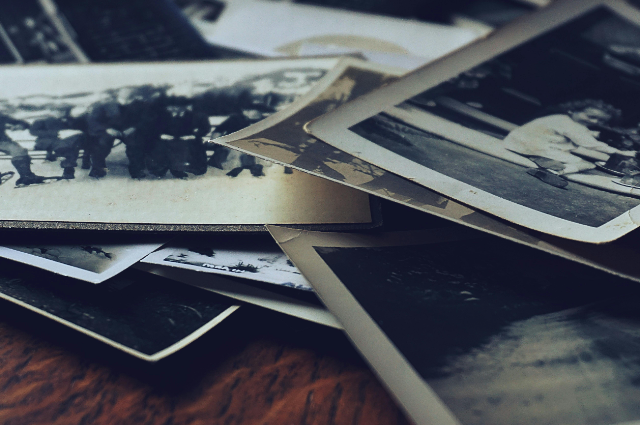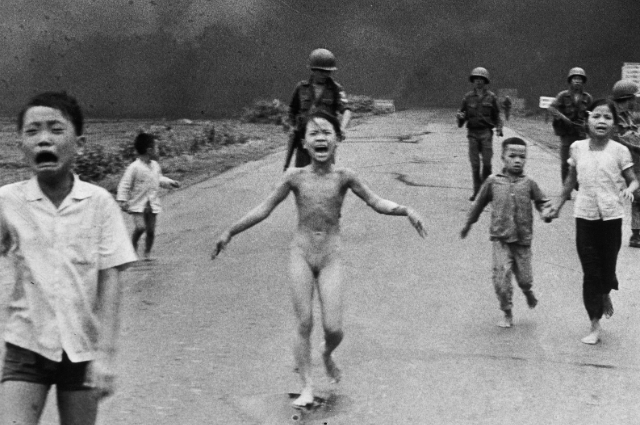
(This article contains a graphic image that some readers may find disturbing.)
Historically, the underprivileged were bound by chains of exploitation, forced into servitude for the wealthy, and relegated to menial jobs in pursuit of a better life. Even elders had to mask their struggles, feigning contentment to provide for their children, while living in fear of war's devastating impact. The world wars hung over them like a sword of Damocles, leaving them vulnerable to the horrors of conflict and the trauma of bullets.
The Napalm Girl, taken by Nick Ut in 1972, is one of the most iconic and haunting photographs of the 20th century. The image captures the horrors of war and the impact of violence on civilians, particularly children. The photograph has become a symbol of the Vietnam War and a powerful anti-war statement.
On that fateful day, June 8, 1972, photographer Nick Ut bore witness to the unthinkable in Trảng Bàng, a village mere kilometres from the tumultuous city of Saigon. The air was thick with the acrid smell of smoke and the distant rumble of artillery fire. As Ut arrived on the scene, he saw panic-stricken villagers fleeing for their lives, seeking refuge in temples and other safe havens. But safety was a fleeting illusion, as bombs rained down upon them, unleashing destruction and chaos.
Amid this mayhem, a young girl, Phan Thi Kim Phuc, emerged from the inferno, her skin severely burned by the deadly napalm. The photograph captures her anguished form, running naked down a desolate road, her arms outstretched in a desperate cry for help. Her eyes, filled with terror and pain, seem to pierce through the lens, leaving an indelible mark on the viewer's conscience.
Ut's camera clicked away, freezing this heart-wrenching moment in time. The image would go on to become an iconic representation of the horrors of war, a searing indictment of the devastating impact of conflict on innocent civilians, particularly children. The photograph's raw emotion and stark reality would shock the world, sparking outrage and empathy in equal measure.
he impact of photography was profound, as the anguished cries of civilians, captured in the lens, resonated deeply with readers. The haunting images of war-torn lives, of innocent children and families torn apart by conflict, evoked a visceral response. Tears welled up in the eyes of those who bore witness, as the atrocities of war were laid bare. The world was compelled to confront the harsh realities of conflict, and the collective conscience was stirred to action.
Nick Ut's photographs, in particular, served as a powerful testament to the human cost of war. His lens bore witness to the unthinkable, and his images told a story that transcended words. The Napalm Girl, a photograph that has become synonymous with the Vietnam War, continues to haunt the world's collective memory. It is a searing indictment of the devastating impact of conflict on innocent lives, a poignant reminder of the human toll of war.
Through his photographs, Nick Ut sought to convey the urgent need for peace, to tell a story that would shock the world into action. And in doing so, he created a lasting legacy, one that continues to inspire reflection and contemplation.
The Napalm Girl photograph has become an enduring symbol of the horrors of war and the impact of violence on civilians. It has been widely reproduced and referenced in art, literature, and popular culture, serving as a legacy.
The photograph has also had a lasting impact on the field of photojournalism. It demonstrated the power of photography to shape public opinion and influence policy. The image has inspired generations of photographers and journalists to document the human cost of conflict and to hold those in power accountable for their actions.
One of the main controversies surrounding the photograph is the question of who actually took the picture. Some have suggested that Nguyen Thanh Nghe, a Vietnamese stringer for AP, might have taken the photo instead of Ut. However there wasn’t any concrete evidence found hence the matter remained unsolved.
Controversy also surrounded the photograph's authenticity, with former US President Richard Nixon questioning its validity, suggesting it was staged. However, Nick Ut maintained that the moment was genuine, capturing the raw emotion and tragedy of war. Ut's account has been widely supported, and the photograph remains a powerful and enduring representation of the conflict's human toll.
The photograph's cropping has also been a subject of controversy. The original image included a soldier in the background, which was cropped out of the final version. Some have criticized this decision, arguing that it altered the context of the photograph. However, Ut has explained that the soldier was simply trying to reload his camera and was not an integral part of the image.
In recent years, the photograph has been at the center of a controversy surrounding social media censorship. In 2016, Facebook censored the photograph due to nudity, sparking widespread criticism. The company later reinstated the photo, acknowledging its historical significance.
Despite these controversies, the "Napalm Girl" photograph remains one of the most powerful and enduring images of the Vietnam War. Its impact on public opinion and the anti-war movement cannot be overstated, and it continues to be widely used in educational and journalistic contexts.
The controversy surrounding the photograph highlights the complexities and challenges of documenting conflict and trauma. Photographers often find themselves in difficult situations, where they must balance their duty to report the news with the need to respect the dignity and privacy of their subjects.
In the case of the "Napalm Girl" photograph, Nick Ut's image has become an iconic representation of the horrors of war. While the controversies surrounding the photograph are significant, they do not detract from its historical importance or its impact on the public's perception of the Vietnam War.
Ultimately, the "Napalm Girl" photograph serves as a powerful reminder of the devastating impact of conflict on civilians, particularly children. Its enduring legacy is a testament to the power of photography to shape our understanding of the world and to inspire action.

